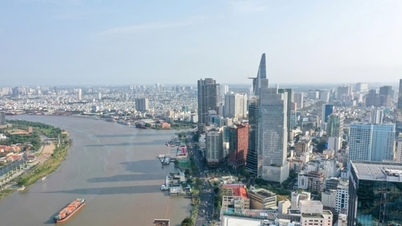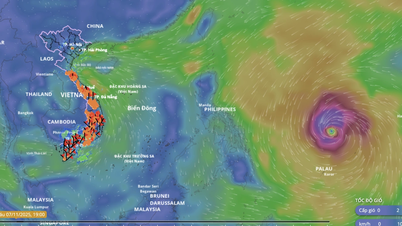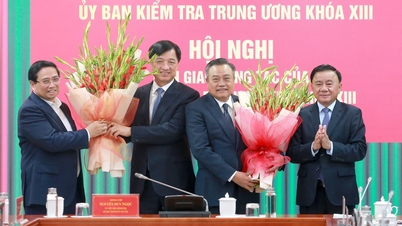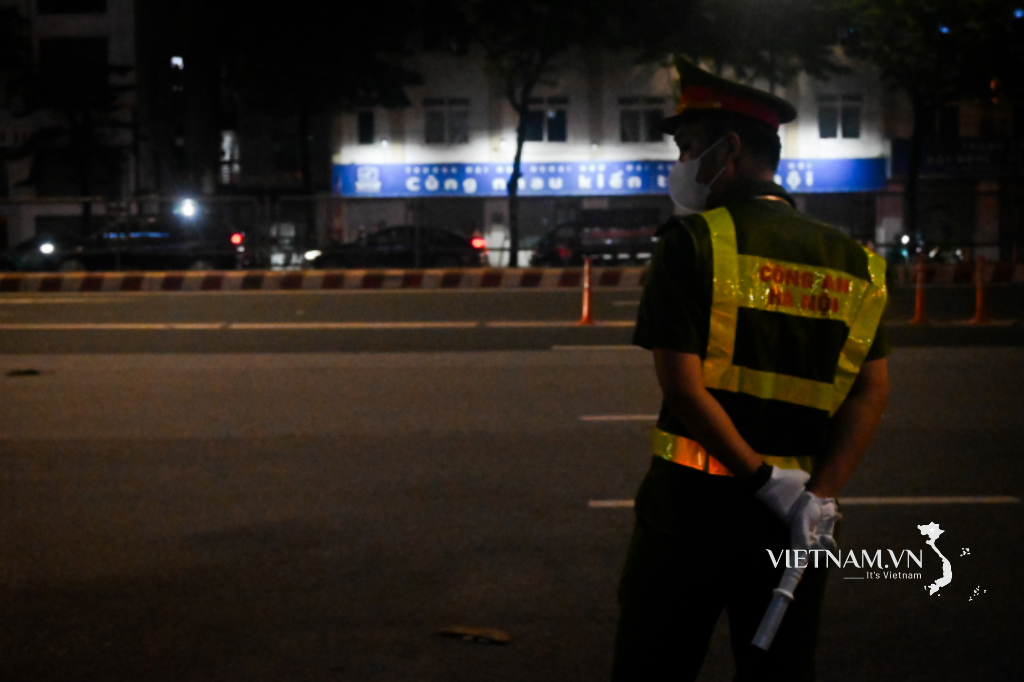Over the past decades, Vietnam has achieved many positive results in regional development. Some socio -economic regions have formed concentrated production centers, specialized in the direction of modernization. Labor productivity and average income per capita in many regions have improved significantly.
However, besides the achievements, there are still many limitations. The development between regions is not uniform, the gap between rich and poor is still large, especially between urban and rural areas, between fast-growing regions and disadvantaged areas. High-quality human resources have not been allocated properly, infrastructure is still lacking in synchronization….
"The sadness" of the past: Lack of regional connectivity causes waste, holds back economic growth and labor productivity
One of the fundamental reasons is that regional development linkage and economic space construction are ineffective, resources are dispersed; the interests of each locality are bound by administrative boundaries, even competing, eliminating the common advantages of the whole region.
According to experts, before August 2025, the lack of regional connectivity among 63 provinces and cities had caused many shortcomings and waste, typically duplication in planning and investment, leading to unfair competition, ineffective resource allocation and waste of resources due to failure to take advantage of the comparative advantages of each region.
In addition, this situation also hinders the movement of labor and goods, as well as limits the ability to cooperate and respond to common problems. As a result, the economic growth rate and labor productivity of the region in recent years have tended to slow down.
Statistics show that the growth rate in the Southeast region used to average over 10% and then decreased significantly in recent decades, maintaining an average of 7-8% per year. In particular, GRDP growth decreased sharply in 2020-2021 due to Covid-19. FDI attraction also decreased when the average scale of each project in the region was only about 10 million USD, lower than the national average of 12.42 million USD.
Regarding labor productivity, according to the report of the General Statistics Office for the period 2011-2020, the average annual growth rate of labor productivity of the entire economy reached 5.29%. Compared to other countries in the region, this growth rate is very low, it is noteworthy that the absolute difference continues to increase.
According to PPP 2017, Vietnam's labor productivity in 2020 reached 18.4 thousand USD, only 11.3% of Singapore's productivity; 23% of Korea's; 24.4% of Japan's; 33.1% of Malaysia's; 59.1% of Thailand's; 60.3% of China's; 77% of Indonesia's and 86.5% of the Philippines' labor productivity.
Logistics businesses happy after merger

The lack of synchronous planning for ports/industrial parks has pushed logistics costs in Vietnam up, averaging 16-17% of GDP. (Photo: DT).
In addition, limitations such as "fragmented, localized development" or "unhealthy competition" are also holding back the overall acceleration of the economy. Not to mention, competitive behaviors that do not comply with business ethics harm the interests of market participants and negatively affect the stability of the economic system.
Draft documents submitted to the 14th National Party Congress clearly stated that fragmented and local development and unhealthy competition have hindered the process of economic restructuring, slowed down the process of deep participation in the global value chain, and reduced the competitiveness of Vietnamese agricultural products and the entire economy in the context of integration."
In particular, production and business development is not synchronous and not closely linked, leading to fragmentation and localization, limiting competitiveness in the international market.
For example, the lack of synchronous planning for ports/industrial parks pushes logistics costs in Vietnam up, averaging 16-17% of GDP. This is a relatively high logistics cost compared to other countries in the region and continent (in Japan, logistics costs only account for 11% of GDP, in Singapore 8%, in Malaysia 13%, in Indonesia 13%)...
From a business perspective, Mr. Cao Hong Phong - Deputy General Director in charge of Gemalink Port - expressed his joy when Vung Tau officially became a part of Ho Chi Minh City. Mr. Phong said that this is a golden opportunity to form the Cai Mep - Thi Vai - Can Gio deep-water port cluster according to the model of a digital super port and a smart logistics system, operated by big data and digital technology .
Regional linkage is an inevitable strategic step to solve the root problem.
With the above consequences, the birth of the "mainstream thinking" on regional linkage is an inevitable requirement. In particular, the revolutionary action - the merger of provincial-level administrative units (from 63 to 34) is a demonstration of the iron-willed political determination, demonstrating the decisive and far-sighted leadership role of the Party to solve the problem at its root.
According to the national master plan, the country is divided into six socio-economic regions, each with its own characteristics in terms of location, potential and strengths, and is oriented to develop in accordance with its specific advantages. This is a strategic step to create a balance in resource allocation, while encouraging regions to develop in a linked and complementary direction.
This model helps reduce intermediary levels, narrow down focal points, improve management effectiveness and efficiency, and at the same time create conditions for resource allocation and regional development management to be more transparent, focused, and flexible.

Economic expert Pham Chi Lan: Regional integration is an inevitable strategic step to solve the root of the problem (Photo: DT).
From an expert perspective, economist Pham Chi Lan said regional linkage under the unified direction of the Party is the only way to optimize resources, creating synergy instead of canceling each other out.
Ms. Chi Lan said that in the past, Vietnam also had a period of economic development following the model, and at the same time established steering committees. However, these models have not been effective, and the leadership committees do not have enough resources and decision-making power to bring about the expected success.
“There are a few provinces that have proactively connected and promoted their strengths, but this is not a model according to the general policy,” she commented.
The expert also gave the example of ABCD Mekong - a model linking 4 provinces to support clean agricultural output that has been quite successful. The model was established based on existing needs and the willingness of people, businesses and leaders of 4 provinces An Giang, Ben Tre, Can Tho, Dong Thap to join.
“However, just four provinces and cities together cannot solve the common problem. This is just an individual connection, not the connection proposed by the Government,” Ms. Chi Lan emphasized.
Accordingly, merging provinces and cities and linking regions is necessary, according to Ms. Chi Lan, to promote the advantages of all parties, and develop sustainably and long-term. Dividing them into smaller parts will not work, the expert added.
In addition, horizontal merger of provinces and cities is also an extremely important step to rearrange the geography in a more reasonable way. For example, with mountainous provinces, before they encountered many difficulties in developing trade due to lack of ports, no opportunities to connect with investors, customers, etc. Thus, when connecting horizontally, each new province with sea and mountains not only fully exploits the advantages of each place, but also helps to solve current problems.
Not to mention, with regional linkages, provinces will not only stop at transactions but will invest deeply in each other, promote economic strength and the final result is increased revenue for the State budget.
On the other hand, mergers also help avoid waste. Take airports as an example. Every province wants to have an airport and build a small airport, but the demand for short-distance air travel is not high, so building one is a waste.
Or power plants, if one province has them, another province will want them too. But for a specific industry like electricity, Ms. Chi Lan emphasized, it is necessary to concentrate planning in an area where there are favorable conditions for investment.
With the above arguments, experts believe that the upcoming 14th National Congress of the Party will continue to redistribute into new provinces, linking this region with other regions on the principle of clearly assigning tasks based on the advantages of each side. From there, each region will accelerate and pull the whole economy to develop.
In general, the Party's determination of regional linkage as the main thinking and the action of merging administrative units is a historic step, creating a solid foundation and arousing confidence in a new, more effective development stage.
Particularly in the Southern region, after the merger, Ho Chi Minh City will play the role of a financial economic center, digital economy, high technology, creative startups... providing finance, human resources, and knowledge for Ho Chi Minh City and the Southern region.
The second pole is Binh Duong, an industrial urban area connected to the industrial urban center and railway logistics center. Regarding regional connectivity, such as industrial parks in Binh Duong, Dong Nai, and Phu My must be connected to the international port cluster Cai Mep - Thi Vai - Can Gio.
The railway center must connect all key infrastructure and neighboring provincial centers. That is, connect with Can Gio Port, Long Thanh Airport, Ho Chi Minh City center, Bien Hoa, Long An, Tay Ninh...
The third pole is the coastal urban area of Ba Ria - Vung Tau, including two important clusters: the Cai Mep - Thi Vai - Can Gio seaport urban economic area in Ganh Rai Bay. An Asian-scale port urban area and the Can Gio - Vung Tau - Long Hai - Ho Tram coastal tourist urban chain...
The merger has brought about initial positive signs. In the first 9 months of 2025, Dong Nai and Tay Ninh were the two localities with the most impressive budget revenue results in the Southeast region. Dong Nai collected more than 73,000 billion VND, reaching 104% of the Government's estimate, while Tay Ninh exceeded 105.6% with a total revenue of more than 39,000 billion VND.
These are two of the few localities that completed their annual targets early, contributing to creating a positive fiscal picture for the entire region. Meanwhile, Ho Chi Minh City, the country's economic locomotive, is estimated to have collected more than VND570,000 billion, equivalent to 81.8% of the annual estimate and an increase of more than 15% over the same period.
Source: https://dantri.com.vn/kinh-doanh/lien-ket-vung-chia-khoa-chien-luoc-mo-loi-tang-truong-cho-viet-nam-20251024142025177.htm







![[Photo] Da Nang: Hundreds of people join hands to clean up a vital tourist route after storm No. 13](https://vphoto.vietnam.vn/thumb/1200x675/vietnam/resource/IMAGE/2025/11/07/1762491638903_image-3-1353-jpg.webp)






































































































Comment (0)